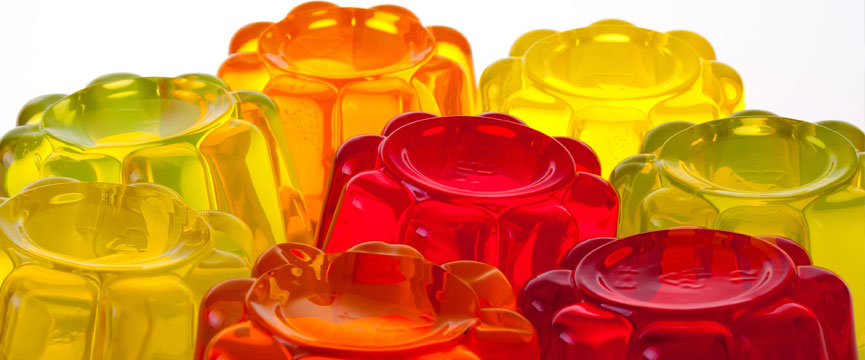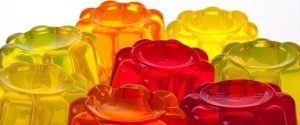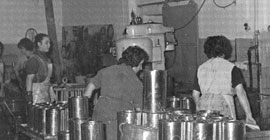
 Unflavored jelly, combined with fresh fruit, is a widely used ingredient in baking and professional desserts. Its main characteristics that convince chefs and pastry chefs are its versatility and ability to enhance the natural flavors of fruits, allowing them to create unique culinary experiences for their customers.
Unflavored jelly, combined with fresh fruit, is a widely used ingredient in baking and professional desserts. Its main characteristics that convince chefs and pastry chefs are its versatility and ability to enhance the natural flavors of fruits, allowing them to create unique culinary experiences for their customers.

Let’s see below how unflavored jelly with fruit is made and how chefs and pastry chefs select and use it to make creations that leave their customers speechless.
Table of Contents
Process for making unflavored jelly with fruit
These are the ingredients needed for the preparation:
- Lazaya Preserves Pastry Jelly in cans or plastic buckets.
- Fresh seasonal fruits.
- Sugar (optional).
- Water or natural juice.
- Jelly mold.
Step-by-step preparation
- Step: Using the gelworkshops.
Using the bakery gel is very simple. Simply open the container and take the required amount, pouring it into a container that can be heated. - Step: Dissolving and mixing.
- The gel is heated at maximum 60°C to preserve the gelling properties. Stir constantly until a homogeneous mixture is obtained.
- Let it cool to 35°C or 40°C before adding the fruit. This prevents it from cooking.
- Step: Preparing the fruit.
- Wash and cut fresh fruit into uniform pieces and dry with absorbent paper. Typically, cut fruit weighing 200-300 grams, depending on the desired density. Fruits compatible with gelation include mango, strawberries, peaches, grapes, and kiwi (previously blanched). Some fruits to avoid, as they contain enzymes that prevent gelation, are pineapple, papaya, and fresh ginger.
- Drain well to prevent excess liquid from altering the final texture.
- Step: Final integration.
- Place the fruit in the mold.
- Pour the bakery gel mixture over the fruit.
- Add sugar if desired: between 50-100 grams depending on the sweetness of the fruit.
- Refrigerate for at least 4 hours, or until the gelatin is completely firm.
- Step: unmolding and presentation.
- Briefly immerse the mold in hot water to facilitate removal.
- Decorate and serve cold.
How do professionals use unflavored fruit jelly?
Baking professionals use unflavored jelly with fruit to create desserts that stand out for their light texture and freshness. Here are some examples:
- Layers in cakes and pastries: Jelly is used as an intermediate layer, providing stability and a very attractive visual contrast.
- Gels and mousses: It’s incorporated into mousses and gels to add a touch of fresh fruit and a crystalline finish. Gelled fruit centers can be created, providing freshness and an interesting textural contrast.
- Color layers: Create alternating layers with different shades of fruit for a striking visual effect.
- Mirror glazes: Jelly is mixed with sugar and coloring for shiny finishes.
- 3D Decorations: Specialized molds can be used to create edible decorative elements.
- Creative molding: Use themed molds that add visual interest to desserts.
- Unique flavor combinations: Mix different fruits and add aromatic herbs such as mint or basil.
Other uses for unflavored jelly with fruit
Fruit jelly isn’t just used in desserts; chefs also use it to enhance numerous dishes. Let’s look at some examples:
- Fruit salads:A creative alternative combines fruit with jelly for buffets and catering.
- Fruit spheres: Using the spherification technique, professionals create delicious fruit caviars.
- Cocktails: With jelly you can create spheres and shots with a touch of alcohol that will undoubtedly surprise many.
- Savory dishes: Jelly is used to create decorative elements in main dishes, integrating acidic fruits to balance flavors.
- Transparent sheets: To wrap preparations or as a decorative element.
- Stable foams: Combining with lecithin to create long-lasting airy textures.
How to select a good unflavored pastry jelly with fruit?
Let’s look at some of the factors professionals consider when choosing their brand of gel for bakeries:
Quality of the pastry jelly
- Transparency: It should be able to dissolve completely without leaving lumps, with a crystal-clear finish.
- Thermal stability: It maintains properties at different serving temperatures.
- Certifications and quality: It is important that the gel has certifications that prove its maximum quality.
Compatibility with fruits
- Acid compatibility: Keep in mind that some acidic fruits can make setting difficult. Therefore, adjust the setting with sugar or use compatible fruits.
- Natural flavor: The gelatin should allow the authentic flavor of the fruit to prevail.
Appearance and presentation
- Color and brightness: A good gel will enhance the natural color of the fruits without overshadowing them.
- Firm but soft texture: It should hold its shape and be easy to eat.
- Absence of residual flavor: The alteration of the aromatic profile of the fruits should be avoided.
Why choose Lazaya gels?
As we have seen, neutral bakery gel is a very powerful tool for any professional in the Horeca sector. Chefs and pastry chefs always choose maximum quality in all its ingredients, including gels and jellies, to create dishes and desserts that delight their customers and elevate their establishment.
Our gels and jellies are favorites among professionals for many reasons, including their wide variety of flavors. In addition to nutro gel, we also offer gels in a variety of flavors (apple, strawberry, lemon, pineapple, vanilla, etc.). Our packaging is available in tin and plastic, and the product shelf life ranges from 12 to 60 months, depending on the packaging. Don’t hesitate to contact us for any questions related to our jelly fruits, we will be happy to help you.





